The Ferdinand was unusual among German WWII era SPGs. A number of things, such as the armament and armour, make it exceptional. However, only a small number of these SPGs was built. There were other tank destroyers armed with the same 8.8 cm Pak 43 gun, and the Germans built a whole lot more of them. One was the 8.8 cm PaK 43/1 auf Geschützwagen III/IV (Sf), otherwise known as the Hornisse (Hornet) or Nashorn (Rhino). The Nashorn was often confused for the Ferdinand, which is understandable: the SPG was not a small vehicle.
Mechanization of heavy weapons
The Germans began thinking about mechanizing heavy artillery in the late 1930s. The idea was to create «self propelled gun mounts» to transport heavy guns, whose goal was to destroy fortifications. These vehicles were often referred to as Betonknacker (concrete buster). Two companies were tasked with their development: Krupp and Rheinmetall-Borsig. Initially, there were few successes in this direction. Neither the Pz.Sfl.IVa nor the Pz.Sfl.V went into production. The vehicles had powerful armament, but paid the price with poor mobility. Instead of fortifications, the target for these SPGs shifted to enemy heavy tanks.
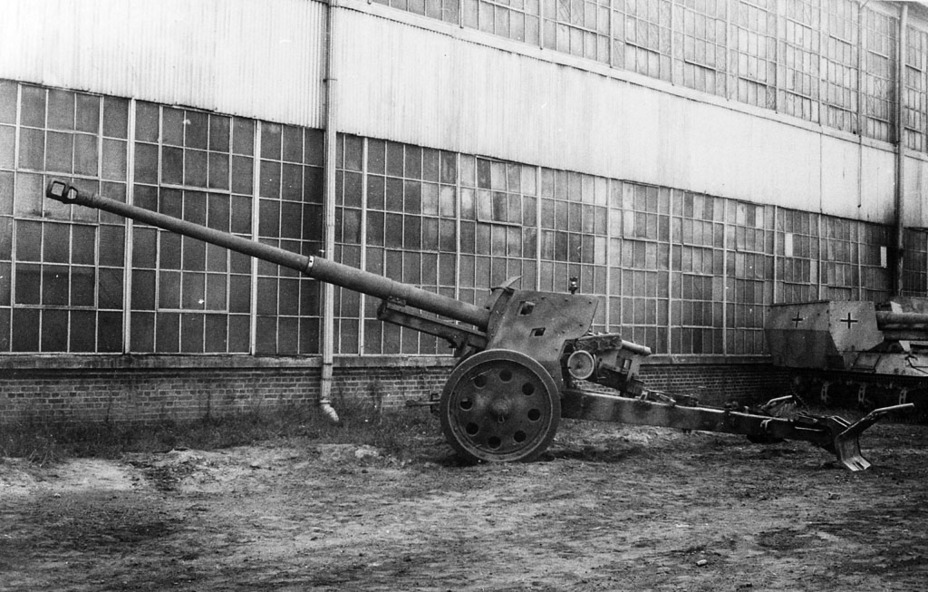
A new burst of interest towards the idea of a self propelled gun mount appeared in early 1942 due to developments in German anti-tank artillery. The increase in caliber and firepower led to an increase in size, and more importantly, weight. Mobility was an important parameter for anti-tank guns. While the 3.7 cm Pak could be transported around the battlefield by a crew of 2-3 men, the 5 cm Pak 38 needed significantly more effort. A special wheel was added to ease the transport of the gun by manpower alone. The 7.5 cm Pak 40 made its debut in the spring of 1942. This gun could confidently combat Soviet heavy tanks, but it weighed about a ton and a half. A crew of 8 could barely push it around the battlefield.
This was far from the end. In 1942 discussion began of an 88 mm anti-tank gun with greater penetration than the 8.8 cm Flak 18. The first such weapon was the 8.8 cm Flak 41, developed by Rheinmetall-Borsig. The excellent penetration characteristics of this weapon were offset by a mass of 8 tons.
Krupp presented their own option: the 8.8 cm Pak 43. The gun was only designed to fire on ground targets, and the mass was significantly lower. However, it was still not great: 3650 kg in combat mode, 4750 kg in transport mode. In order to fire, the gun had to be taken off its wheels and deployed into combat mode. The variant using the carriage of the 10 cm Leichte Kanone 41, indexed 8.8 cm Pak 43/41, was not as heavy. However, the 4350 kg gun could scarcely be transported by the crew's own power. Abandoned weapons of this type were far from rare. The muzzle brake also «helped» by revealing the position of the German anti-tank gunners on the first shot.
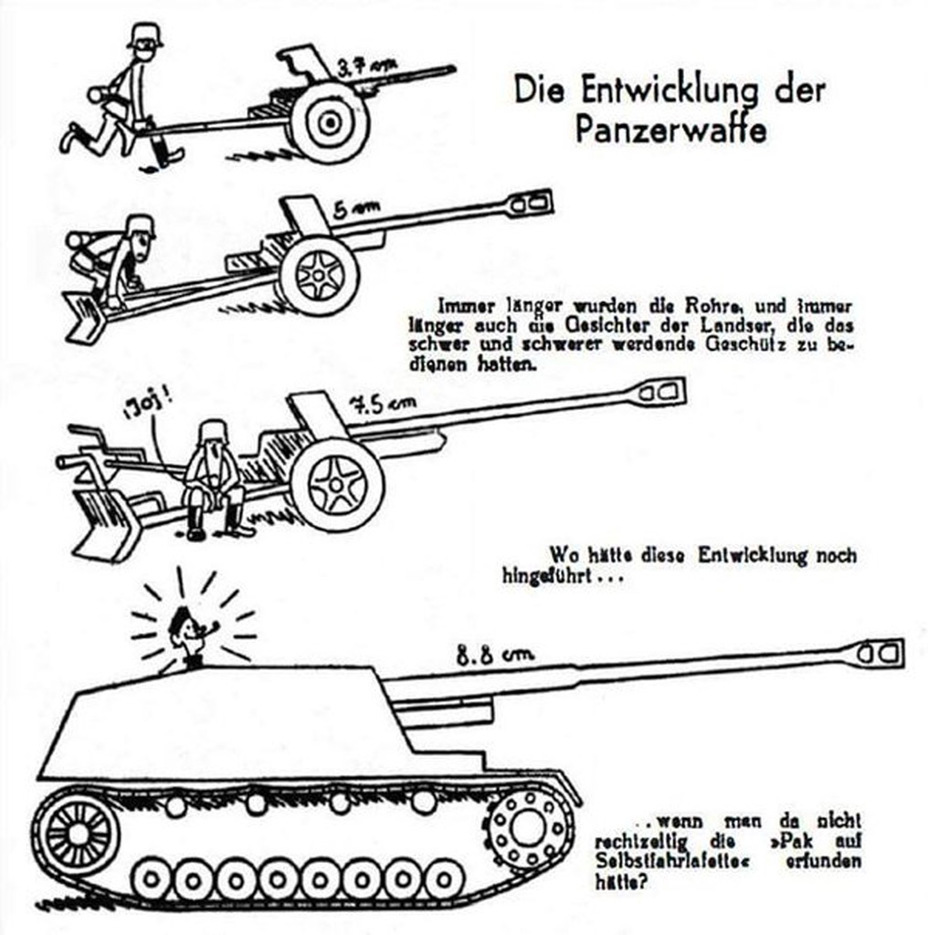
It was quickly understood that the mobility of an anti-tank weapon of this type would be low. However, towed guns were cheap, and could thus quickly meet demand. Nevertheless, at a meeting held by the Reich Minister of Armament Speer on July 23-25th, 1942, the question of a compatible self propelled chassis was raised. At that point, Rheinmetall-Borsig was working on an SPG for the 149 mm sFH 18 cannon. It was logical to develop a variant of this chassis for the 8.8 cm Pak 43 gun.
However, the Pak 43 was not completely finished, and Krupp had its own ideas about what an SPG should look like. The company proposed a reworked variant of the Pz.Sfl.IVc, a chassis with a turbulent and disappointing history. Initially, it was designed to be a bunker buster, but work did not even progress to the construction of a prototype. The redesigned variant used the 8.8 cm Pak 43 with an altered gun shield. Work on this project reached the full scale model stage, but it did not progress to metal. By the time it was completed Rheinmetall-Borsig was almost finished with its chassis, and Hitler was determined to only have one chassis for the two heavy guns.
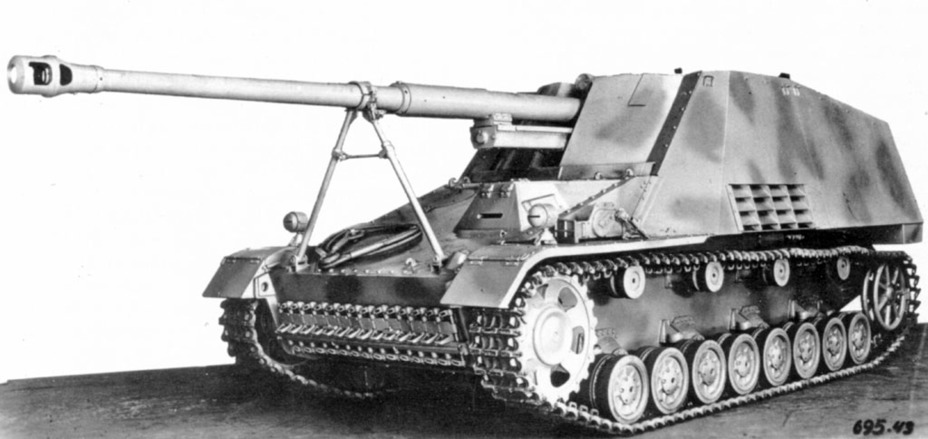
Development of a tank destroyer on the s.Sfl. auf Pz.Kpfw.III/IV Fg.St. chassis, which was its first official name, fell on Alkett. This company from Spandau, a suburb of Berlin, was a division of Rheinmetall-Borsig. The progress mentioned above related to the Geschützwagen für sFH 18/1 chassis. However, there were no plans to build a prototype of the tank destroyer, since the chassis of both vehicles was the same.
The PzIV medium tank was used as a foundation for the new chassis. The final variant, known as the Geschuetzwagen III/IV, used the drive sprockets and transmission elements from the PzIII. This simplified production at Alkett, which also produced StuG 40 SPGs. In order to free up space in the fighting compartment in the rear, the engine and cooling system was moved to the middle of the chassis. Large air intakes appeared along the sides. The casemate and driver's compartment designs migrates from the Geschützwagen für sFH 18/1. Only the front plate of the casemate was changed. The armour thickness also remained the same.
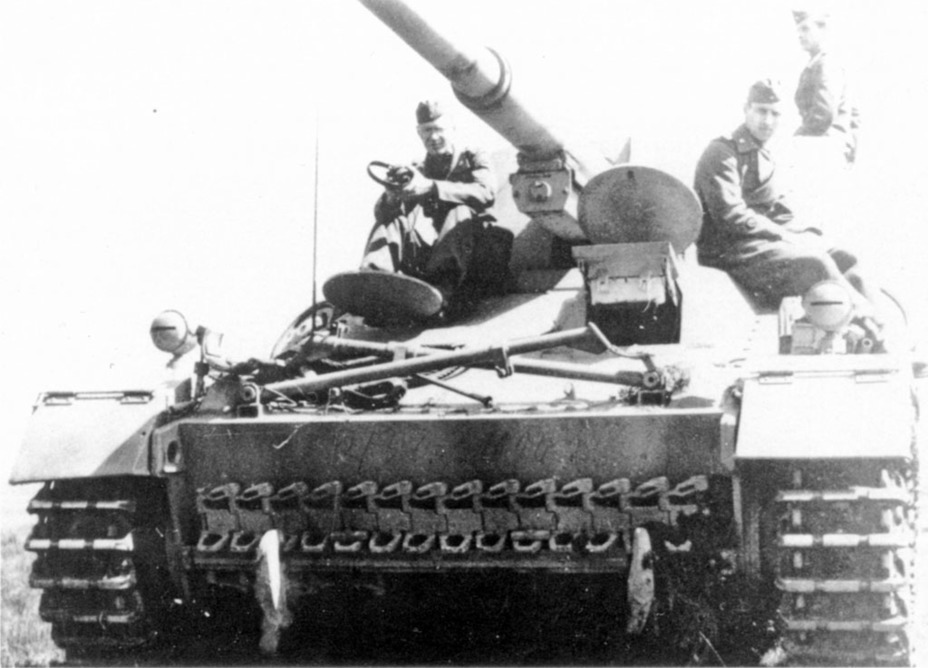
The gun mount was also similar. The oscillating part of the 8.8 cm Pak 43 L/71 (this variant was called Pak 43/1) was installed on a pedestal mount. A large mantlet covered the front. Since the gun had single piece ammunition, the crew was reduced to 5. The vehicle carried 40 rounds of ammunition onboard. There was also an MG 34 machinegun and 2 MP 40 submachineguns that were used to defend against enemy infantry. At 24 tons, the resulting vehicle was 2 tons heavier than the Geschützwagen für sFH 18/1. The mobility did not decrease significantly, but the cost of the growing weight would become obvious later.
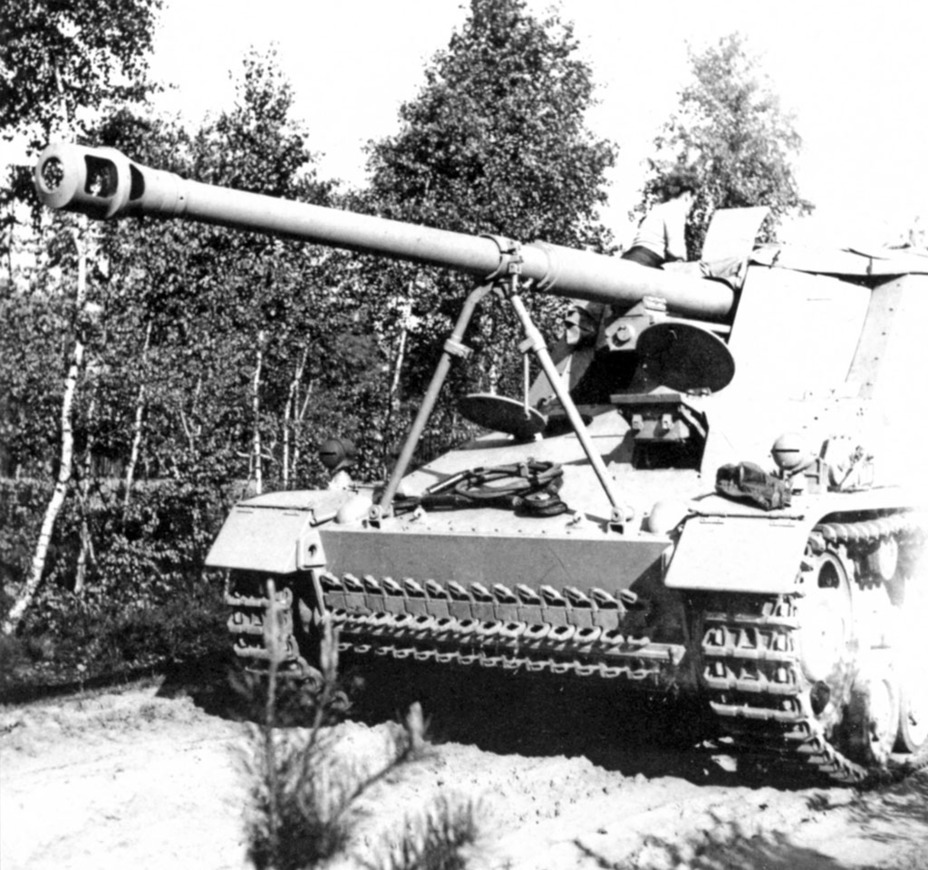
Production plans for the new SPG were actively discussed in January of 1943. Three designations were used in this time. Two of them used the word Hornisse (hornet). The name 8.8 cm Panzerjäger 43/1 (L/71) Hornisse was also used in the manual. In total, seven different names were used in 1943 alone! It is not surprising that the name Hornisse was the most popular. In late January of 1943 the vehicle received the index Sd.Kfz.164, even though not a single one has been built.
Alkett did not wish to build the Geschützwagen für sFH 18/1, better known as the Hummel, but did not turn down the tank destroyer. On January 22nd, 1943, a contract for 420 Hornisse was signed in Dusseldorf. The first vehicles were due before the end of January, and the factory was to reach its full rate of production of 30 vehicles per month in March. An additional contract for 150 Hornisse was signed with Deutsche Eisenwerke AG, Werk Stahlindustie on the same day. The first 5 vehicles were planned for May of 1943, and 15 per month were planned from July 1943 to March 1944. The total production volume of the Hornisse would be 570 vehicles.
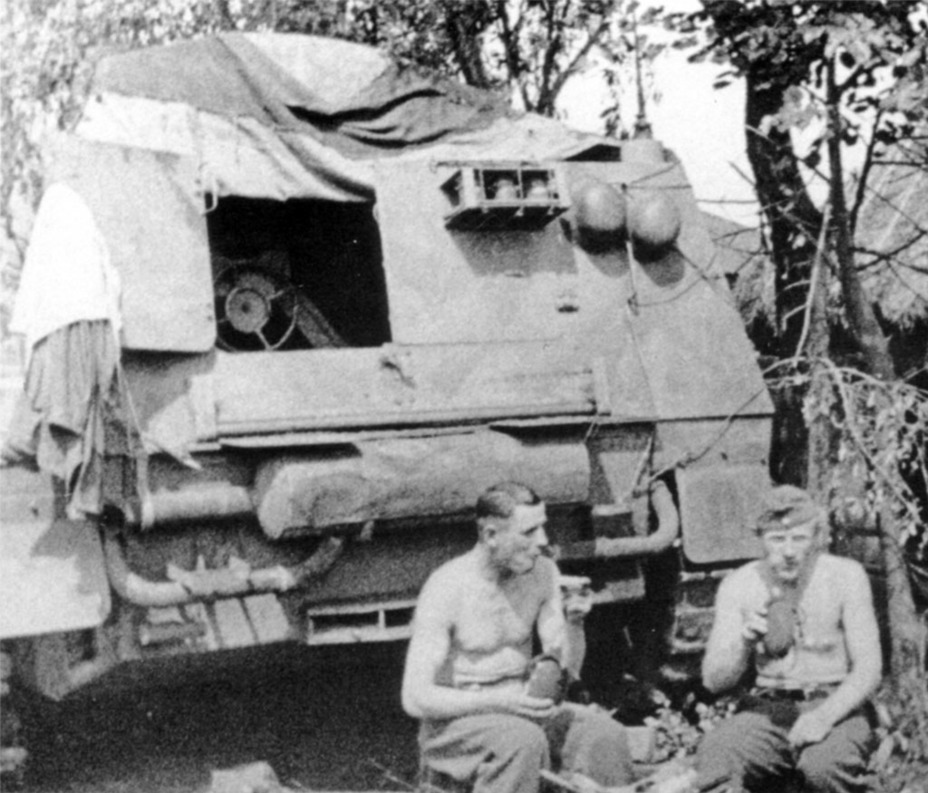
In practice, the first 14 vehicles were delivered only in February. The plans had to be seriously corrected. At a meeting on February 6-7th, Hitler stated that Hummel production was of the highest priority, as they were included in tank division artillery batteries. The Hornisse was of lower priority. Deutsche Eisenwerke AG, Werk Stahlindustie did not end up building a single Hornisse, switching entirely to Hummels. Alkett was producing the tank destroyer alone. Rates of production were high: 30 SPGs in March, 41 in April, 35 in May and June. Because of this, heavy anti-tank units could be formed starting in late March.
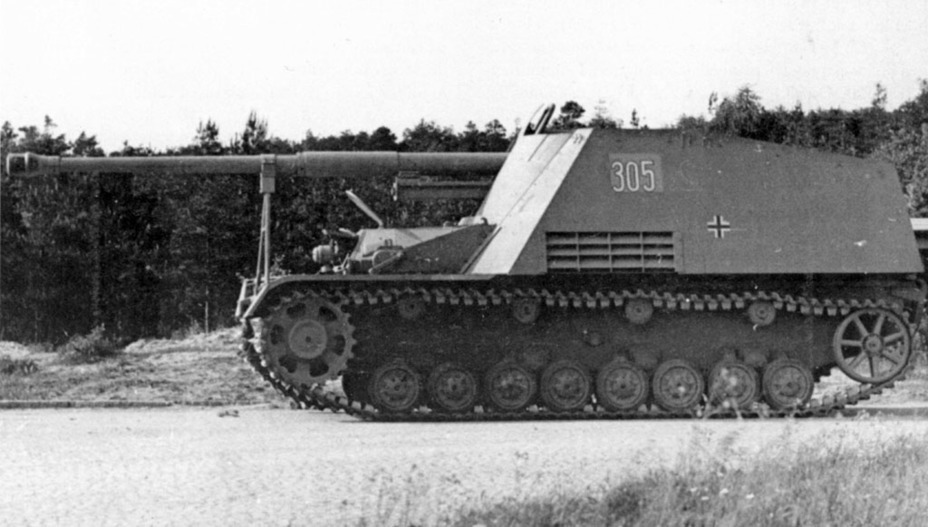
Various changes were introduced into production at the earliest stages. The first Nashorn had PzIII Ausf.F type air intakes for cooling the brakes. In March, they were replaced with larger ones. No fewer than 5 changes were introduced in march.
In April of 1943, starting with vehicle #51, a periscopic Sfl.ZF.1a sight was used instead of a telescopic ZF 3×8 sight. In May, the thickness of the gun shield was increased from 10 to 15 mm. The right headlight was also removed around then. An important change was the alteration of the travel lock. Now it could be disengaged from the driver's seat, which made it useful in case of sudden enemy attack. Also in May a half-ring was added behind the mobile gun shield. As with the Hummel, the Hornisse lost its muffler in June of 1943.
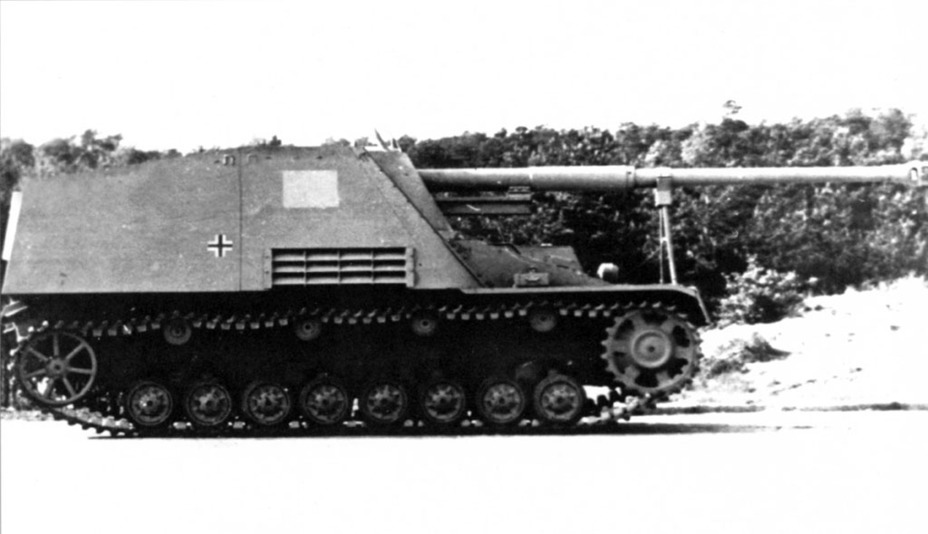
Hornisse production decreased in August. Only 16 vehicles were delivered during that month, and 27 in September. The situation changed in October, when 42 vehicles were delivered. On November 23rd and 26th the Alkett factory was struck by a large scale bombing raid. British Bomber Command struck a significant blow to the factory, destroying a number of plants entirely. Production was moved to a different location, and 24 vehicles were completed in November. 37 were build in December, and then production stalled. 345 vehicles of this type were delivered in 1943.
The difficult situation after the bombings meant that production in Spandau was wrapping up. The last 25 SPGs were delivered in February of 1944. Alkett built 370 of these SPGs in total, with chassis serial numbers 310001-310370. Despite all the complications, the shortfall vs the initial order was for only 50 Hornisse.
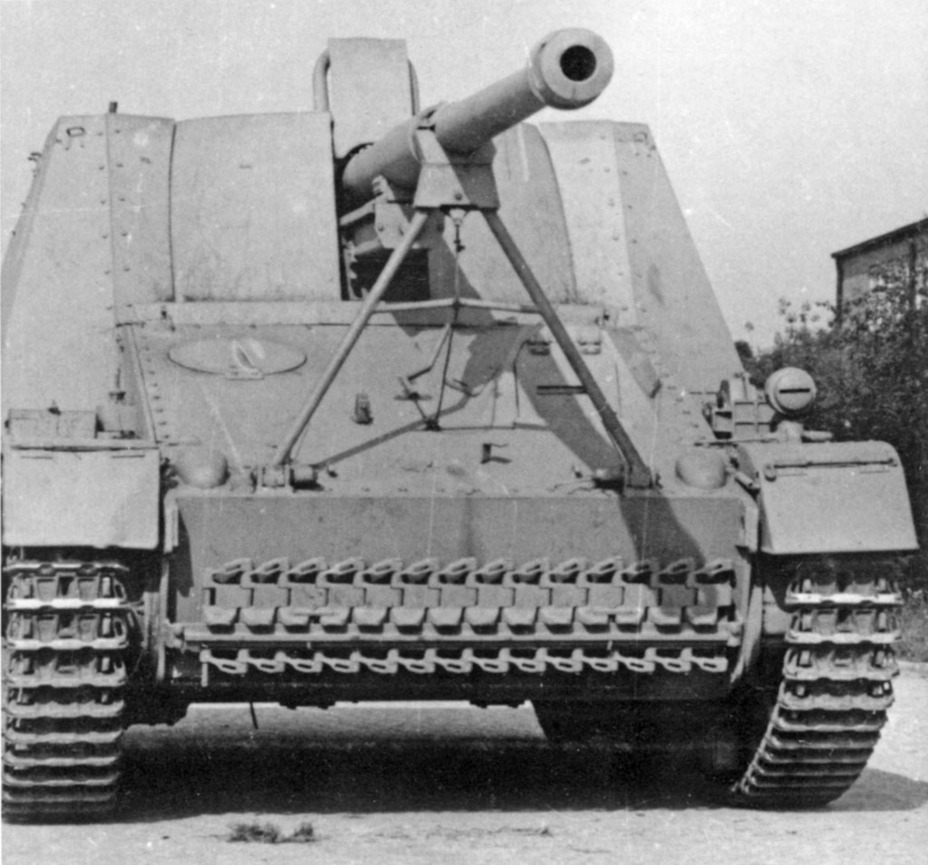
Production of the Hornisse could have ended even without British bombers. Experience with these SPGs in the summer-fall of 1943 brought little cause for optimism. The vehicle had neither the StuG 40's armour nor the mobility of the Pz.Sfl.IVc. The Jagdpanther was pitched as a replacement, but common sense won in the end: it was better to have a mediocre tank destroyer than to have none at all. Until the fall of 1944 the Jagdpanther was produced in miserly amounts and never became a true replacement for the Hornisse.
As a result, the idea of continuing production of the old vehicles cropped up, especially since a reserve factory was found. Contract SS 210-8911/43 was signed with Deutsche Eisenwerke AG, Werk Stahlindustie back on May 22nd, 1943, for the production of 2064 vehicles on the GW III/IV chassis. Hornisse production was moved to Werk Teplitz-Schönau in the Czech city of Teplice. The first 25 cannons arrived in February of 1944, but in reality production began in April, when 20 vehicles were delivered.
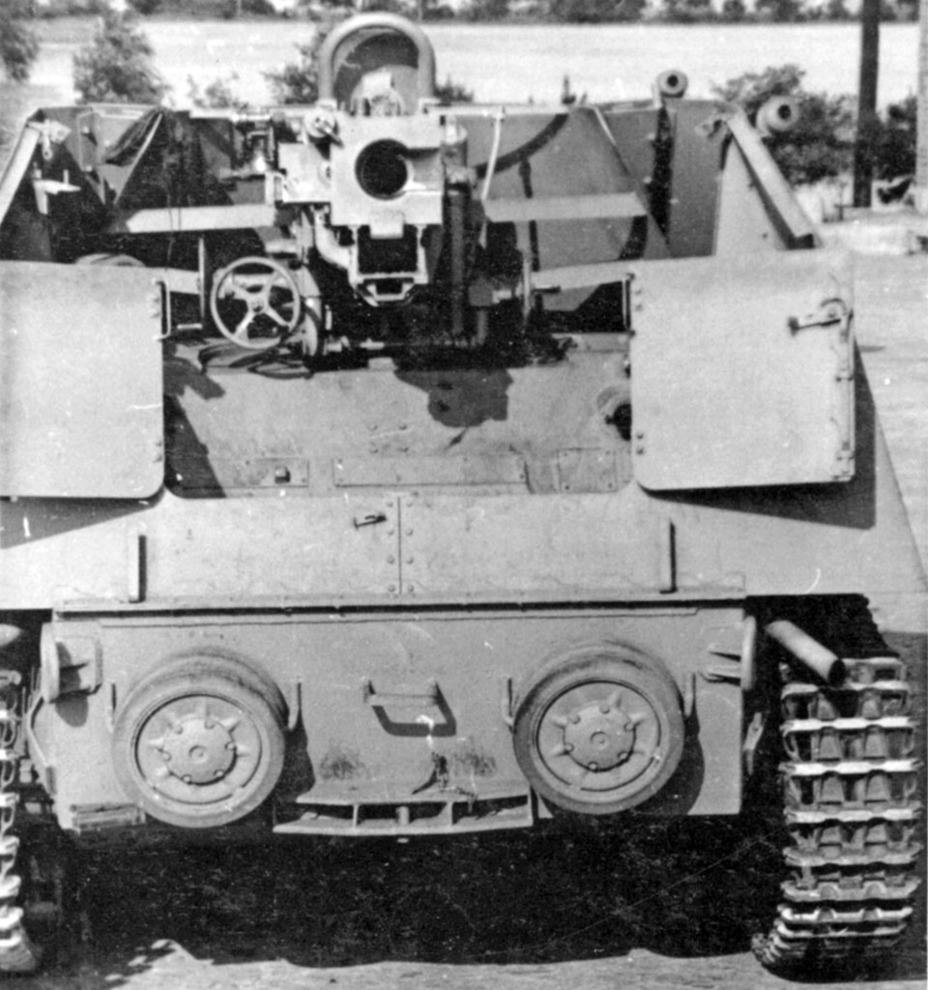
It was planned that 100 of these vehicles would be built in Teplice by June of 1944. By then, production of the Jagdpanther was expected to get off the ground, and the Wehrmacht desperately needed these resources to build Hummels. Nevertheless, Werk Teplitz-Schönau built 108 vehicles in 1944. On June 6th, 1944, the 6th Department of the Armament Directorate began using the name Nashorn (rhinoceros) to refer to these vehicles. The name had been used previously, but now it was official. However, some documents still referred to it as Hornisse. The name changed a few more times, but the name Nashorn remained. It was frequently used in correspondence.
Production of the Nashorn resumed in January of 1945. Another 16 vehicles were built before March of 1945. In March, 180 GW III/IV chassis out of 430 were allocated for Nashorn production. However, these plans were not meant to be, and production of all SPGs at Werk Teplitz-Schönau ended. In total, 124 Nashorn with serial numbers 310371-310500 were built here. Unlike with the Hummel, these vehicles received neither the reworked driver's cabin nor the altered air intakes.
Big vehicle and gun, little armour and mobility
Preparation for use in combat began before even the first Hornisse was completed. On January 30th, 1942, TO&E K.St.N 1148b for a Hornisse anti-tank battery was approved. Initially, a battery would consist of 10 vehicles, 6 of which were split between 3 platoons, 3 remained in reserve, and vehicle #10, equipped with FuG 8 and FuG 5 radios, was used by the commander. On March 25th, 1943, a decision was made to gather 3 batteries into the 560th Heavy Tank Destroyer Battalion (s.Pz.Jg.Abt 560). On April 1st, a variant of the K.St.N 1148b TO&E was approved, now with 14 vehicles per battery. Now there were two commander's SPGs, and each platoon counted 4 Hornisse. A battalion, according to TO&E K.St.N. 1155b approved on March 30th, 1943, included 3 batteries plus 3 Hornisse in the HQ. A battalion of Hornisse would count 45 tank destroyers.
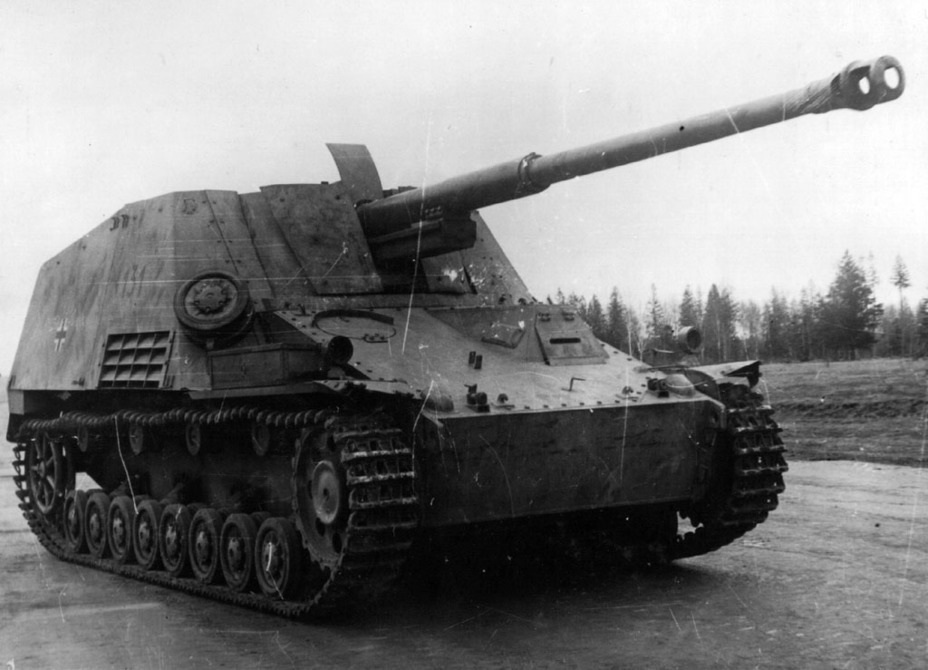
A rather high rate of production allowed the formation of another battalion, s.Pz.Jg.Abt 655, on April 14th, 1943. On April 25th, another battalion, the s.Pz.Jg.Abt 525, began forming. The 560th and 655th battalions reached battle readiness in May of 1943. In July of 1943 they first saw battle during Operation Citadel.
That is when the Red Army first confused them for Ferdinands. Two battalions of Ferdinands are mentioned in a General Staff book on the Battle of Kursk published in 1944. In reality, these were Hornisse. It was not difficult to confuse them: the armament was the same, and the silhouette of the SPGs with a rear casemate was rather similar.
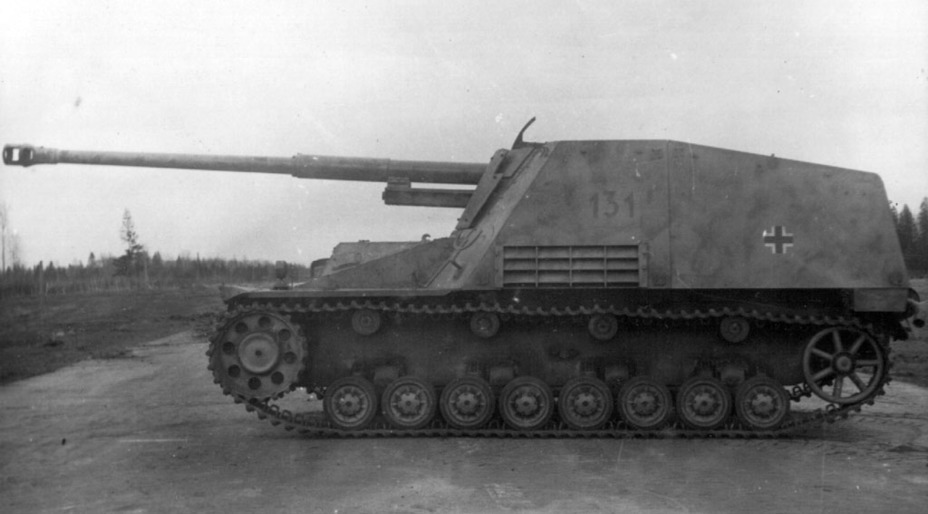
An advantage of the SPG was its powerful and precise gun that the Hornisse was designed around. The crews could hit at target at 2-3 km. However, the chassis began offering unpleasant surprises even during training. 5 engines had to be replaced in s.Pz.Jg.Abt 560, as they were damaged by overheating. One of the causes was an issue with the tachometers. 4 vehicles suffered from various transmission problems. The exhaust pipe, installed right under the access hatch, also earned its share of curses. Exhaust gases heated up the ammunition in the rear rack, which could lead to trouble. There were also issues with the sights, which caused them to be replaced with the Sfl.ZF.1a, as described above.
A heap of problems also turned up on the front lines. Overheating of the engines remained an issue, which is not surprising considering the increase in mass compared to the Hummel. There were issues with sights that cropped up during movement, which were exacerbated by problems with the aiming mechanisms. A new travel lock was needed. The battalion suffered losses before it even saw battle: one Hornisse was lost to a mine laid by Partisans, another was damaged by Soviet aircraft on June 21st.
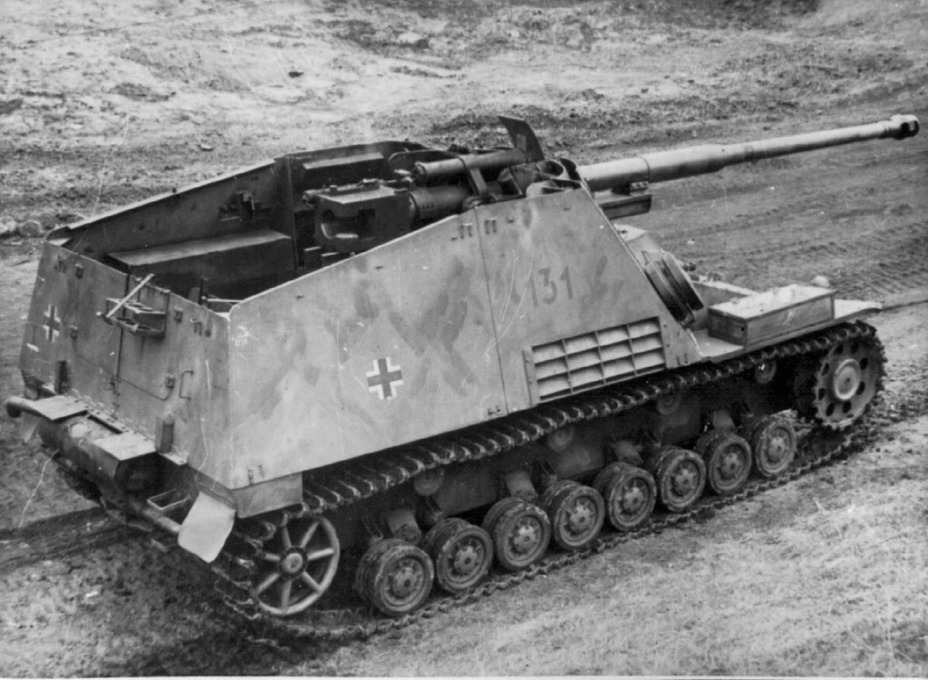
The results of the use in combat were mixed. On one hand, batteries claimed dozens of destroyed Soviet tanks. Considering the fact that battles happened at long range, that is very well possible. On the other hand, by August 31st, 1943, the s.Pz.Jg.Abt 560 had only 31 Hornisse remaining, and 18 ready for combat. The s.Pz.Jg.Abt 655 had 40 Hornisse, 26 of them functional.
Small issues plagued the SPGs during combat. The SPGs attained success when they fought on the defensive, preferably from well prepared positions. Their luck turned then German infantry used them as assault guns. It is not only the Red Army that considered everything with tracks and a gun to be an infantry tank. German infantry also strongarmed the SPGs into carrying out missions for them. This raised two serious issues. One was the size of the Hornisse. At 3 meters of height and width, the SPG was an excellent target. The second issue was that this target's armour thickness was 30 mm at best.
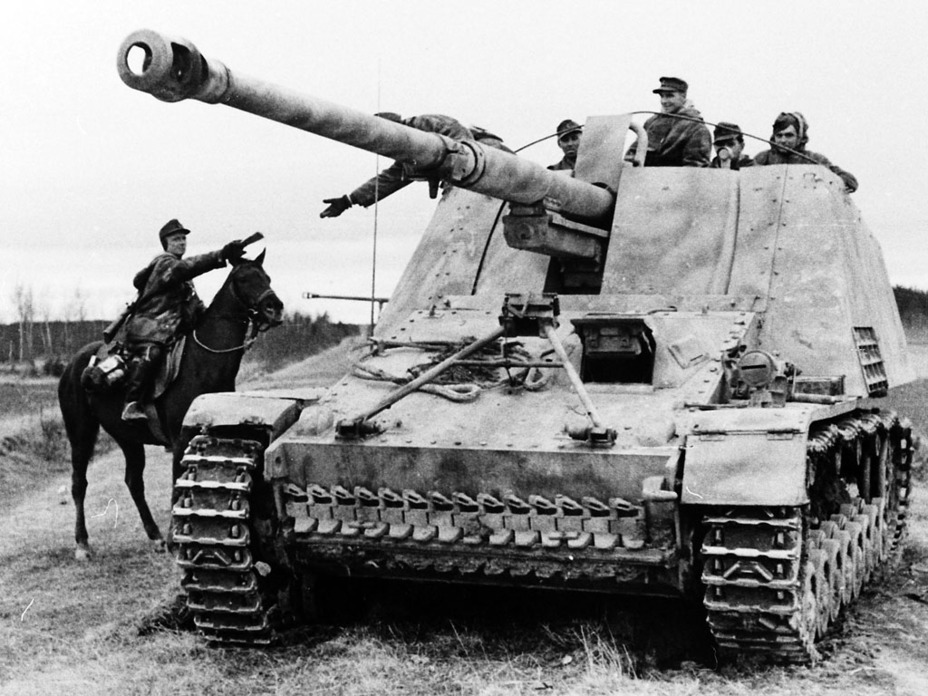
Two new battalions were formed in August-September of 1943: 93rd and 519th. In December of 1943 they were joined by the s.Pz.Jg.Abt 88. It was the last to receive the nominal 45 vehicles. In total, 6 battalions entirely equipped with the Hornisse were formed. 12 more were received by the 664th tank destroyer battalion, which also had towed Pak 43 guns.
German command began thinking about a replacement in November of 1943. Experience showed that such a large target with nearly no armour had few chances for survival in combat at close and medium range. By December 30th, 1944, 165 Hornisse were left of 478 produced, only 130 still ready for battle.
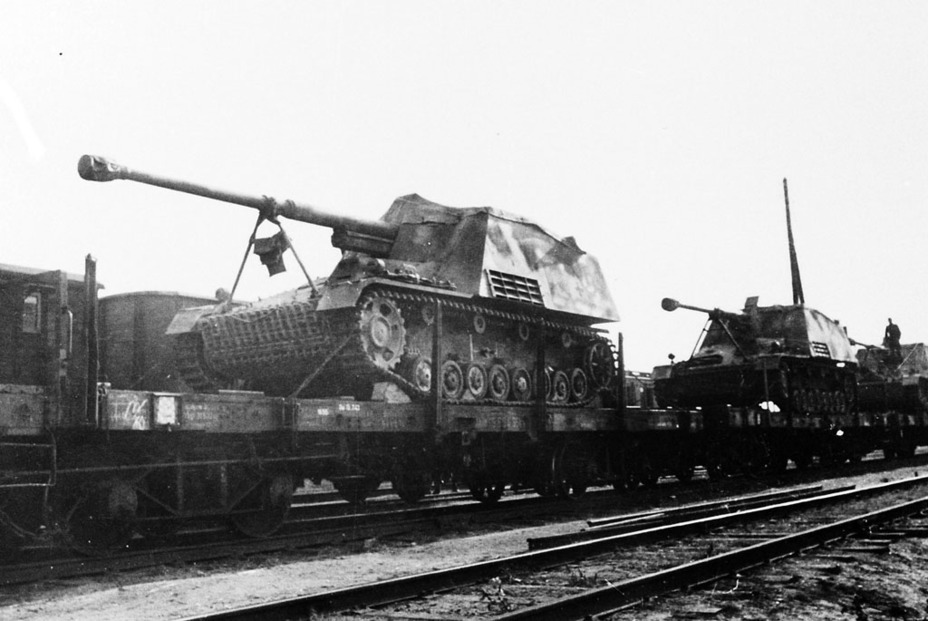
The Hornisse were gradually replaced with Jadgpanther and Jagdpanzer IV tank destroyers. By the end of 1944 only s.Pz.Jg.Abt 88 and s.Pz.Jg.Abt 525 were fully stocked with the Hornisse. The SPG's core concept turned out to be flawed. It was too heavy, expensive, and large for a «gun carrier». Something lighter and simpler, preferably with the ability to take off the gun, would be optimal. That was the trigger for the creation of the Waffentrager concept. However, neither the PzIV nor the GW III/IV chassis was suitable for this purpose. In February of 1944 the chassis was rejected for use as a Waffentrager.
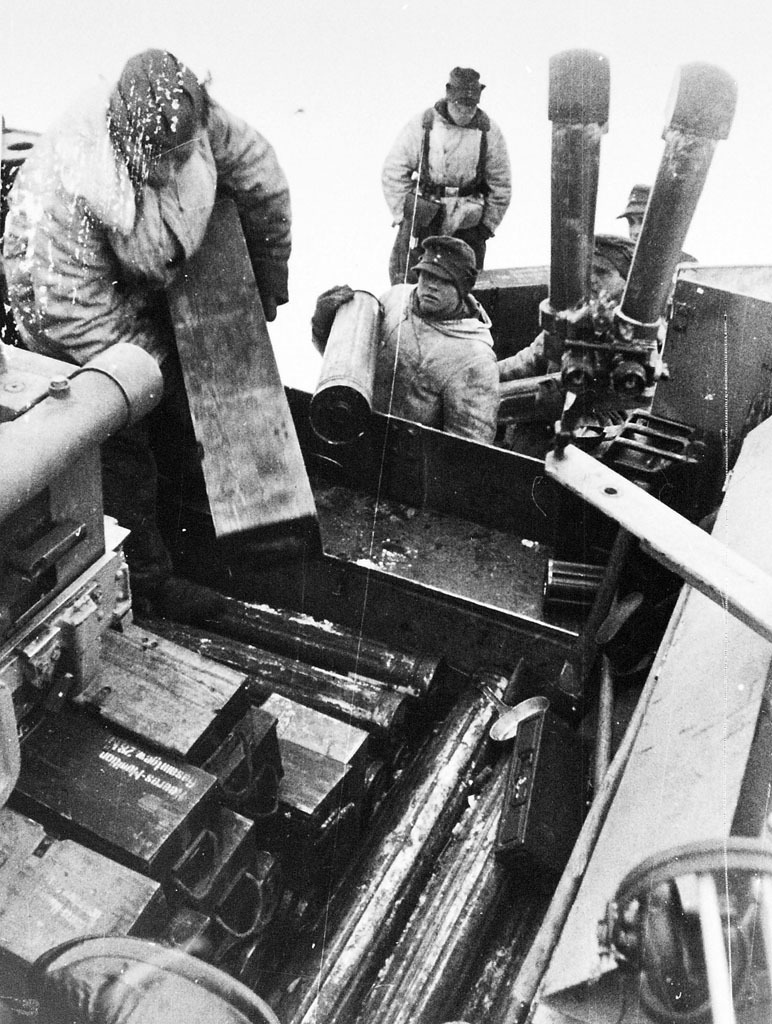
Only two complete Hornisse/Nashorn survive to this day. The first, serial number 310030, was produced in March of 1943. It already has some of the initial changes, including new air intakes for cooling the brakes. It only lost its exhaust pipe after the war. This vehicle was captured at Kursk, and can now be seen in Patriot Park. The second, a later type, was put on display near the Aberdeen Proving Grounds. Presently it has been moved to Anniston, but is not available for viewing.
Finally, a third vehicle with serial number 30063 is under restoration in the Netherlands. This SPG is being assembled from pieces. Foreign engine and transmission components will be used, but the exterior will be authentic.
Translated by Peter Samsonov. Read more interesting tank articles on his blog Tank Archives.
Sources:
- Panzer Tracts 10-1 — Artillerie Sfl. – from Pz.Sfl.IVb to Hummel-Wespe, Thomas L. Jentz, Hilary Louis Doyle, 2012;
- Panzer Tracts 7–3 Panzerjaeger (7.5 cm Pak 40/4 to 8.8 cm Waffentraeger) — development and employment from 1939 to 1945, Thomas L. Jentz, Hilary Louis Doyle, 2006, ISBN 0–9771643–3–0;
- Central Archives of the Russian Ministry of Defence.






